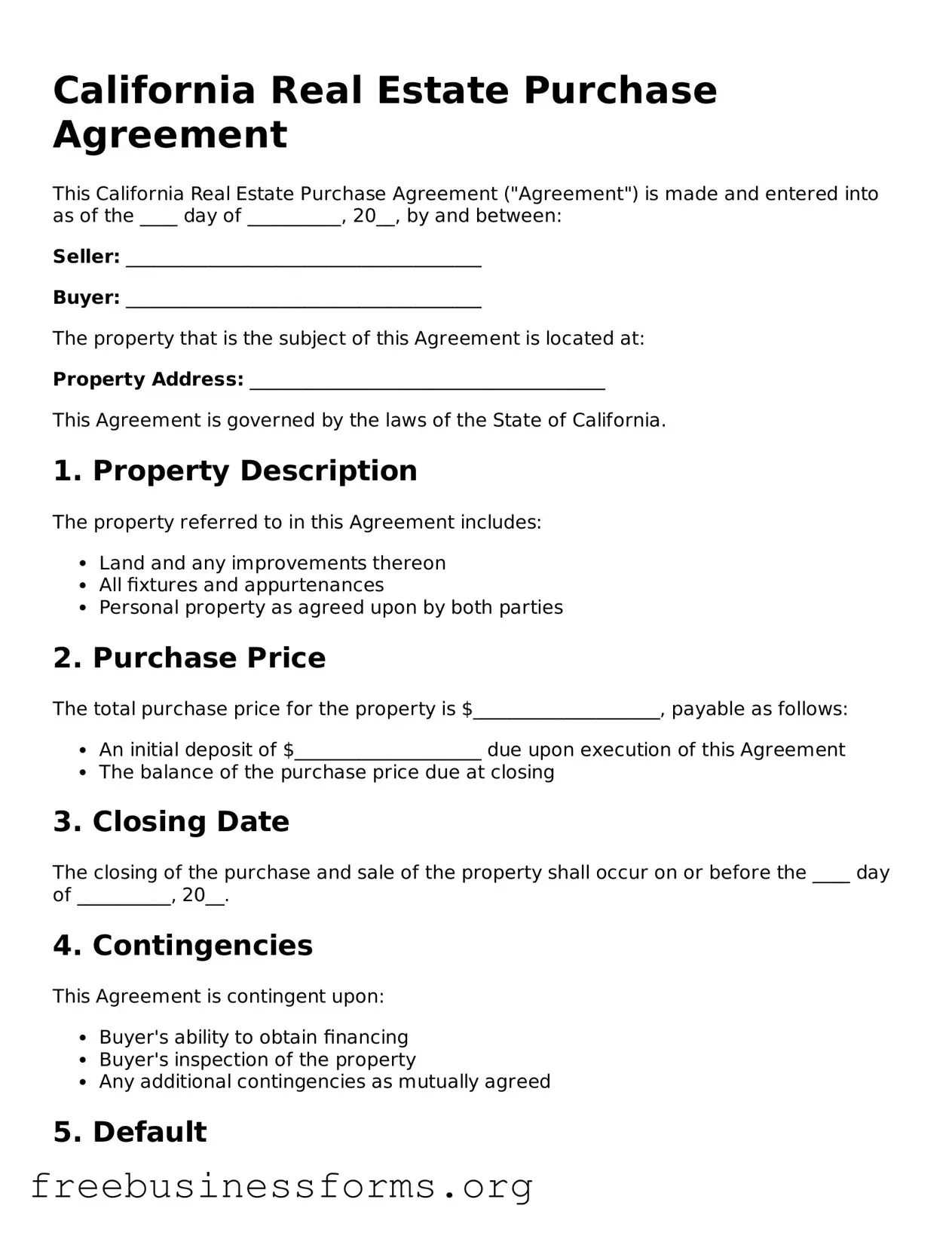California Real Estate Purchase Agreement
This California Real Estate Purchase Agreement ("Agreement") is made and entered into as of the ____ day of __________, 20__, by and between:
Seller: ______________________________________
Buyer: ______________________________________
The property that is the subject of this Agreement is located at:
Property Address: ______________________________________
This Agreement is governed by the laws of the State of California.
1. Property Description
The property referred to in this Agreement includes:
- Land and any improvements thereon
- All fixtures and appurtenances
- Personal property as agreed upon by both parties
2. Purchase Price
The total purchase price for the property is $____________________, payable as follows:
- An initial deposit of $____________________ due upon execution of this Agreement
- The balance of the purchase price due at closing
3. Closing Date
The closing of the purchase and sale of the property shall occur on or before the ____ day of __________, 20__.
4. Contingencies
This Agreement is contingent upon:
- Buyer's ability to obtain financing
- Buyer's inspection of the property
- Any additional contingencies as mutually agreed
5. Default
In the event of a default by either party, the non-defaulting party may pursue any remedies available under California law.
6. Governing Law
This Agreement shall be governed by the laws of the State of California.
IN WITNESS WHEREOF, the parties have executed this Agreement as of the date first above written.
Seller Signature: _________________________________
Date: _________________________________
Buyer Signature: _________________________________
Date: _________________________________
